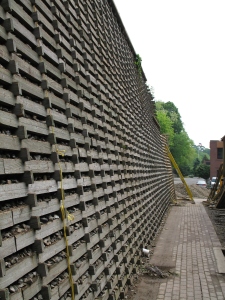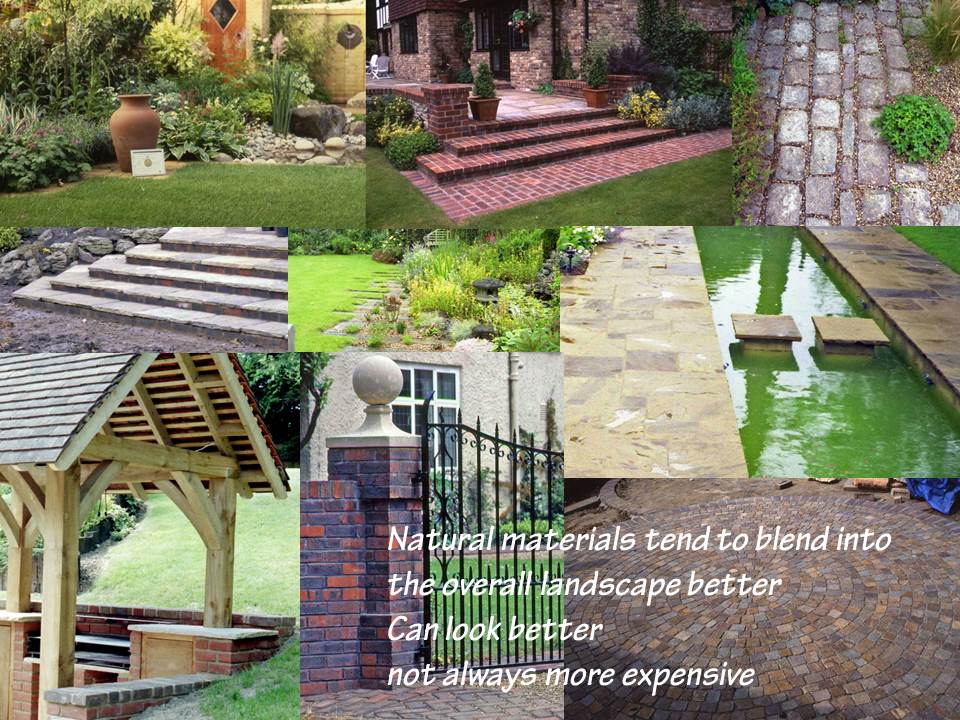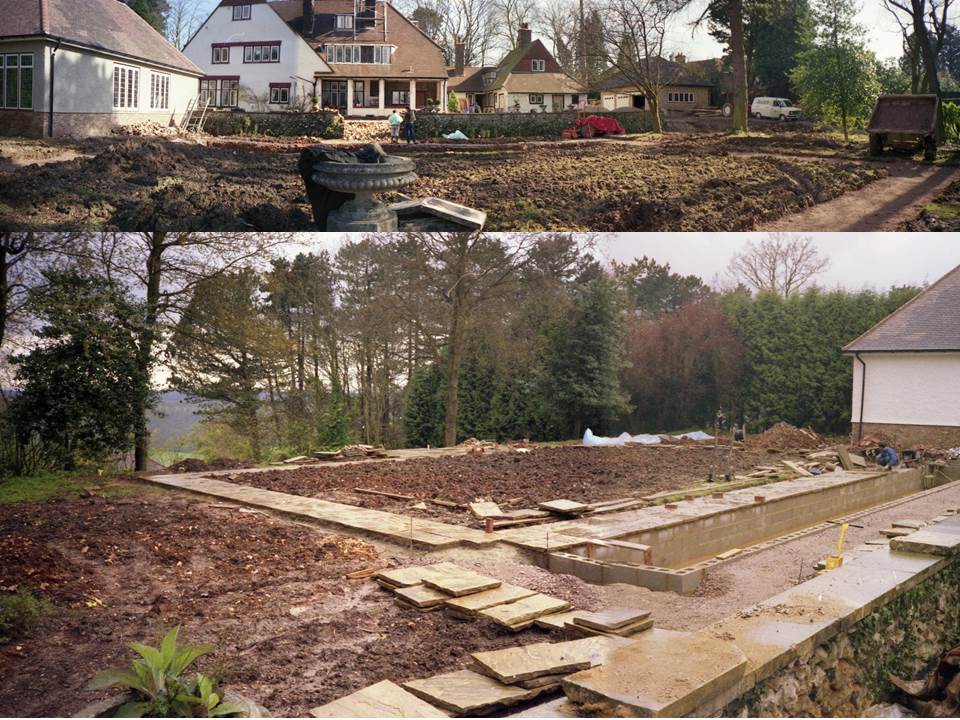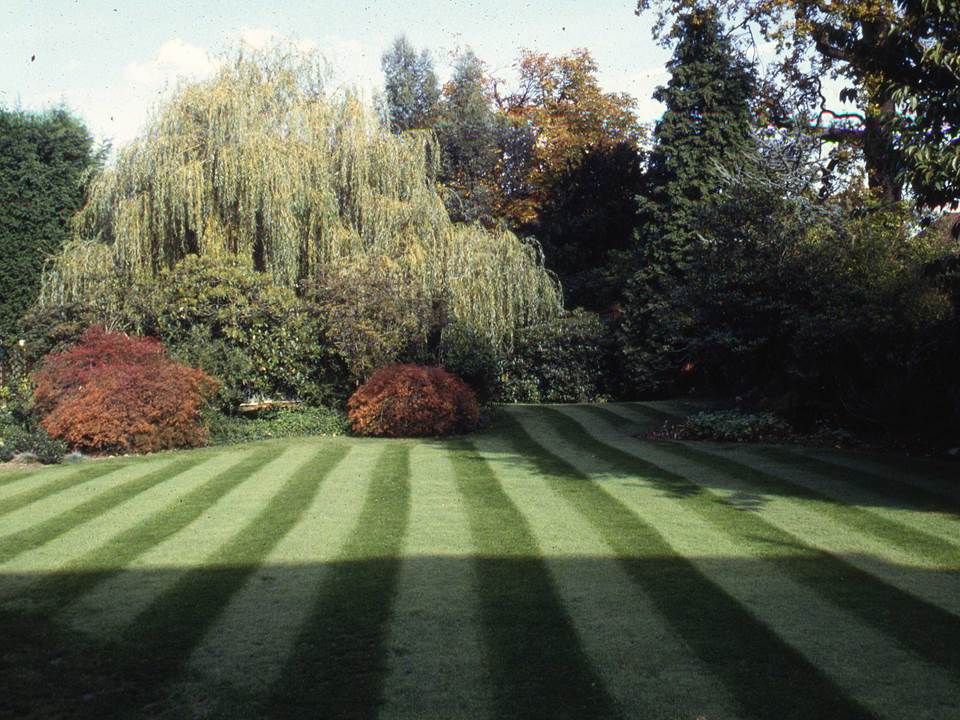-
Green Walls
We built our first green wall in 1984, in rural Kent, not far from a famous racing circuit. The wall was built on a chalk escarpment so to make it more interesting we added plants into the wall, the wall was fully structural, quick and easy to build. As you can see quite a wide variety of plants was used to see what would develop best in this situation.
Views: 57
-
Ground Preparation
It seems that Spring or is it Summer has finally arrived to the MidWest ?
It’s at times like these when one misses being in England with it’s very much milder climate, although their winter was a tad wetter than normal ( I hear wetter than the past 200 years !).
So back to the MidWest, the bunnies are hopping around, the snakes are emerging, grass has turned green, buds are bursting and flowers are appearing, hardy folks are out and about in their yards, starting to tend the vegetable gardens in ernest.
With that in mind I thought it might be an idea to talk a little about the various methods to use to prepare ground for planting.
Easy Way :
The easiest way to prepare ground is to first cut down any vegetation to as close to the ground as possible – rotary lawn mowers are good for this, so long as you have walked over the ground and removed any large stones, branches or other debris, it also helps if the found is reasonable flat.
Next all that you need to do is to cover the area to plant in a thick coating of newspapers, then cover these with reusable landscape fabric and secure in place.
It takes about 4 – 6 weeks to clear all the growth beneath, but when you do lift off the landscape fabric ( carefully as you can keep this for future use) and then removed the newspaper you should find bare soil beneath. Simply replace the landscape fabric and plant through this to complete you project.
Harder Method :
Cut down the growth on the area – usually with a rotary lawn mower ( do check for objects first).
Now for the fun part, stripping off the growth, this can be a strenuous operation if you use say a spade to ‘chip’ the grass and weeds off, alternatively you can use a rototiller and take a quick romp across the hard ground until a fine tilth is established, of course you have just spread a kazillion weed seeds as you do this. If the ground really is ‘too hard’ it helps to soak the area with water the day before.
Now all you need to do is to rake to an even level – do make sure that the ground slopes away from buildings, as when it rains you don’t want the ground to become waterlogged or allow water to accumulate near walls or on paths etc.,
Finally you can place and secure the landscape fabric, and complete the planting of your project.
Planting :
The planting technique is basically the same for both techniques :-
- Water thoroughly all plants to be planted.
-
Keep plants in shady position until planting.
-
Cut a 6 inch ‘x’ in the landscape fabric in the desired planting position
-
Dig a hole approximately 50% larger all-round than the plant pot.
-
Keep this soil nearby.
-
Add a small amount of planting compost to the base of the pit, together with fertilizer and if you have it a corn based super absorbent.
-
Mix these materials together and add some water until you have a ‘porridge’ or as ‘she’ who must be obeyed would say a ‘mud pie’
-
Select plant, tap edge of container to facilitate removal of pot, and carefully place in pit.
-
Carefully backfill soil around plant and firm into position.
-
Fold back landscape fabric carefully to the stem of the plant.
-
Apply approximately 2-3 inches of mulch ( keep at least 2 inches away from plant stems)
-
Water thoroughly, and again every other day for the first two weeks.
Views: 72
-
We’re ready to record our radio show..!

We would really like to hear what you think about our program, and to ask you what you would like to hear on the show, or even be interviewed about any of the topics we are planning to present.
Here’s a typical weeks content:
The show is intended for the homeowner, with input from homeowners & experts around the world.
Discussing Edibles, Vegetables and Herbs, what are the easiest to start with, where & how should I grow them.
An interview with a homeowner that grows veggies and herbs interspersed within flower borders – growing peppers, rosemary, parsley, beans,cabbage, lettuces, tomatoes, etc., are quite easy,
Amusing anecdotes from some 40 years of landscaping gardens & commercial sites across the globe.
Interviewing a small organic vegetable farmer in the MidWest, what they are growing ,how they get to market…
Around the world trends in growing vegetables & herbs from our colleagues abroad, looking at for example – Allotments in England, Balcony raised beds in Europe,
The next week will be:
Choosing the right plant – how to plant, prune, and maintain flower beds and plant containers.
Interviewing a sustainable garden designer in the USA – how to save water, prepare ground, aftercare, etc.,
More anecdotes from around the globe.
Trends in Playgrounds, Roof Gardens, Paving, Parks, Grass areas from around the world..
If you have a question you would like ask, please send us an email with the question we will try and answer questions each week, we may even call you ! We will also send you details of where you can hear the program.
As the program will be on internet radio, it will be possible to record directly from the web, enabling you to play back when its best for you.
Your message has been sent
Views: 39
-
Soft natural garden area

Using natural materials almost always creates a much softer and pleasing finish, here the gravel and granite setts, with the planting make a superb xeriscape garden, requiring very little aftercare.
Views: 32
-
Tiger Rhus

Don’t you think there is something incredibly relaxing about looking at soft architectural plants in the right setting ?
Views: 31
-
Unusual Flower Competition

Some years ago, while attending a Hockey competition, in I believe Alkmaar, we came across a collection of floral displays in gardens, this one looked amazing !
Views: 97
-
A large green retaining wall

Fully retaining gravity walls can be made from specially treated wood..this one is 25ft high!

Treated Timber Gravity Wall These walls are quite easy to construct with a small crew, they are light weight and adaptable. We have found that adding small planting ‘burrito’ works really well. The timber weathers much better if covered with planting, it helps to prevent the wood twisting, the planting looks really attractive.
Here you see a green wall some years after completion

[contact-form-7 id=”781″ title=”Contact form 1″]
Views: 136
-
A typical English garden landscape

We were very fortunate to be able to design and build two adjoining executive properties.

We worked with this client for a number of years, developing his garden into this beautiful, peaceful retreat from everyday stresses..
Shortly after completion we became one of the first Toro irrigation installers in London. With a certain amount of ingenuity we found a way to instal irrigation in an existing landscape without creating too much damage.
Have a look at our blog “No trenching Irrigation Installation”
Views: 148
-
Some tips and tricks for that dream landscape
A somewhat larger residence, with a lovely brick gulley detail.
Our first green wall way back in 1984, this superb timber product (guaranteed for 50years) is fully structural to a retained height of about 27ft (9m), this wall is about 14ft in total, and terraced to make the best use of the available space. We added the planting to give this steeply slopping garden a softer look.
This larger residence was developed as a modern Arts & Crafts style garden, using random rectangular yorkstone paving, natural bricks and knapped flint walls – knapped flint is a difficult product to use, necessitating us to develop a modern approach to using a ‘live sand/lime mortar, we added stainless steel butterfly ties every 9 inches ( 250mm) to enable a quicker laying time.
Finally the classic English stripped lawn…from one of our clients gardens
Views: 43
-
Roof Gardens

Some years ago we started designing and building roof gardens, in those days specialised materials were not too plentiful, so invariably we ended up inventing our own solutions. This award winning project dates back to 1984.
Here’s how we did this :

Specialised planter box Each plant grouping is planted inside a GRP container that has artificial rock sides, the larger rocks are free standing, the containers are filled with planting compost. The paving is laid on spreader pads, and the gravel is in free draining grids on spreader pads. This means the only variable is the snow loading.
Well apart from a particularly violent storm , ok, it was a hurricane in 1987 which lifted one of the larger rocks off the roof and blew it off the four storey roof into the Kingston upon Thames marker square. It was easy enough to recover, but being so large it wouldn’t fit in the building elevators so we had to haul it up the outside of the building to reposition it.
Views: 36
-
Bound Gravel Drive

This beautiful bound gravel driveway, is actually the result of some serious engineering, the house was built over an old pond and had to have deep pile foundations. To ensure that this driveway stood up to constant use, it was constructed with a geofabric,then limestone subbase, followed by a base macadam, which was then coated with two layers of fibredec ( a combination of chopped fibreglass/gravel and tar). This creates a water bound, long lasting gravel surface that doesn’t shift with wear.
We added a stock brick edge for visual appearance and to prevent the drive from breaking away should a vehicle run off the edge.The timing for this work had to be between Spring and Summer as the binding agents only work at temperatures above 60f.
Views: 141
-
A growing collection of landscape features
Examples of hard landscape features
Over the next few days, we will add details from each of these projects for you to see how we did it…
Of course , we may seem experienced, this is because sometimes we ‘Did it’ more than once before we ‘Got it’.
Overall it’s been a great deal of fun , and now we have thousands of pictures to share… hope you don’t get bored.Views: 130





































